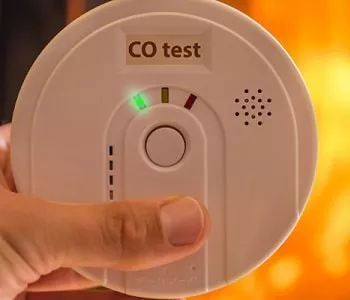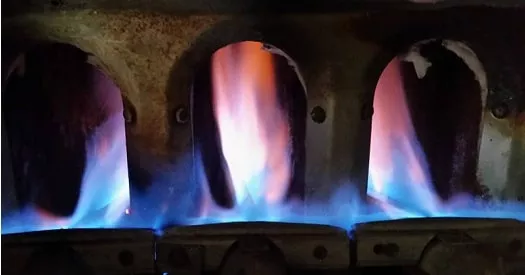
If your HVAC system runs off electricity, then you don’t need to worry about it as a source of carbon monoxide (CO) poisoning. If you have gas-fueled appliances in your home, then you definitely need a CO detector. Your furnace could be the source of a lethal accident if you don’t take the proper precautions. Here we teach how to tell if your furnace is leaking carbon monoxide, discuss how to fix a leak, and more. Let’s start with the basics.
How Does a Furnace Produce Carbon Monoxide?
Carbon monoxide can leak from appliances that use combustion. CO is the byproduct of incomplete combustion when some of the gas does not burn up. When a furnace is working properly, the CO doesn’t escape the heat exchanger until it’s safely vented through the flue. A leak into your home can be deadly!
How to Detect a CO Leak in a Furnace
Carbon monoxide is odorless, colorless, and can’t be detected by your senses. The best way to tell if your furnace is leaking CO is to install a carbon monoxide detector. As you know, technology is never fail-proof. Your CO detector can stop working or run out of batteries (which should beep at you obnoxiously if it’s running low). There are some signs that you can look for that might indicate you have a CO leak:

- Is there condensation on windows near the furnace?
- Do you notice the smell of burning or overheating of exhaust gases?
- Do you notice visible soot, smoke, backdraft, or fumes?
- Check the burner to make sure it is burning blue (correct) instead of yellow (problematic).
- Physically, you might feel chest pain, impaired vision, nausea, headaches, and other forms of discomfort.
How Far Should a CO Detector Be from the Furnace?
20 feet is the recommended maximum distance, and it should probably be at least 5 feet away from the furnace.
How to Fix a Carbon Monoxide Leak in a Furnace
First, realize that this is something you probably want to leave to a professional because we are talking about life and death here. However, you can resolve the issue yourself. The key is to locate the source of the leak. It will reside in the flue gas line, the vent system, and/or the heat exchanger. Look for cracks, holes, or any other indications that they are compromised. For a more thorough inspection, try applying soapy water or a dye to the components, and it can find the cracks for you. Once you have identified the failing component, replace it. That’s it! You’re all done.
Shop Furnace Parts at PlumbersStock
Now that you know how to tell if your furnace is leaking CO, it's time to replace the components. We carry a huge inventory of HVAC parts like blowers, furnace ignitors, blower wheels, etc. Did you know that you can find member pricing here on certain items (typically name brand, MAP priced items) if you log in? For industry professionals buying in bulk, please consider contacting us directly for extra special pricing and extra savings.
Related resources:
Can You Bypass a Flame Sensor?
Quiet a Noisy Furnace Blower
Replace Furnace Blower
How to Tell If a Blower Motor Is Bad



